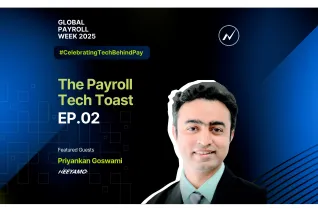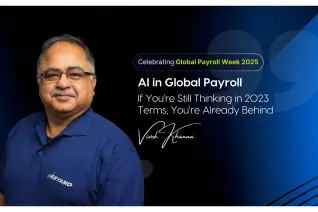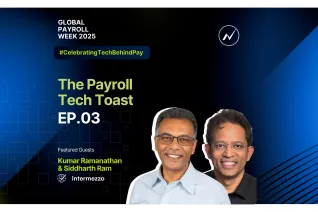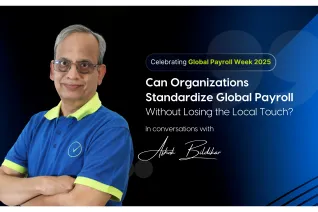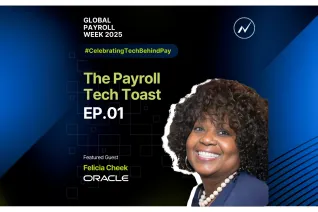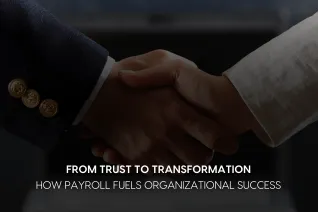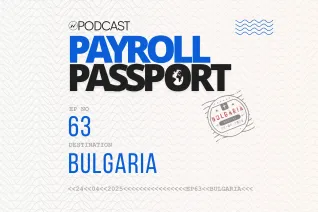What Does the Future of Global Payroll Look Like in a Borderless World?
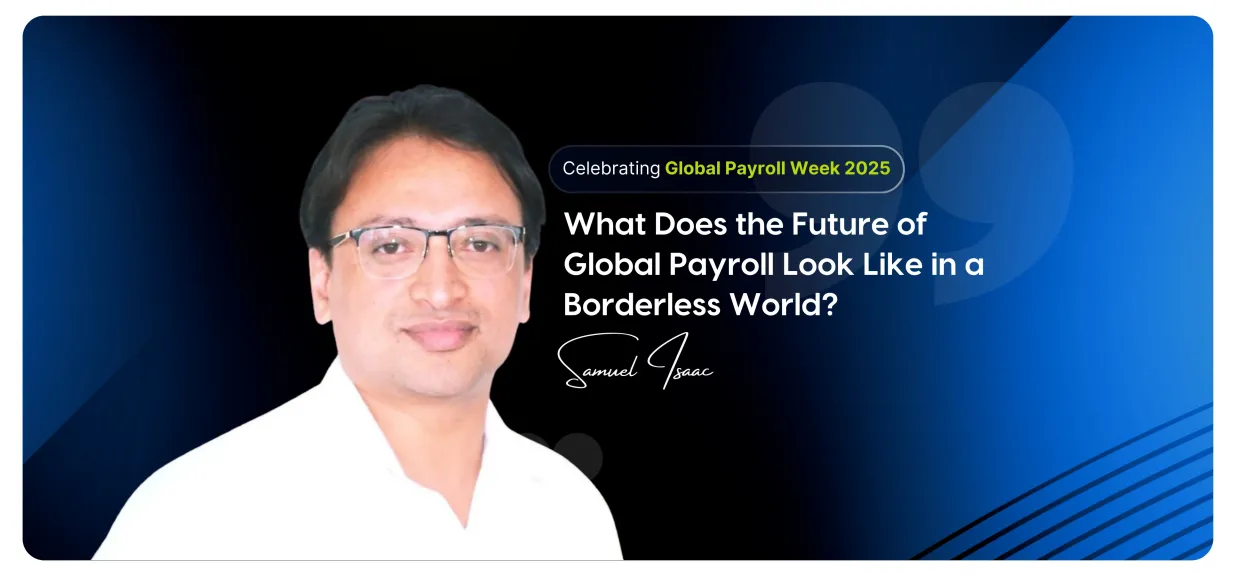
By Samuel Isaac
The way we work has changed forever. The way we pay hasn’t – at least not fast enough.
Today, companies can find talent anywhere. But when it comes to paying that talent – compliantly, accurately, and on time – it often feels like we’re stitching together legacy systems, country by country, hoping nothing breaks. That won’t hold in a world where the workforce is increasingly global, remote, and decentralized. Payroll, much like work itself, needs to be reimagined – natively global, intelligent by design, and frictionless in execution.
The Future Is Native – One Global Engine, Not a Hundred Local Ones
The future of payroll isn’t stitched together, it’s built ground up. Traditional platforms have largely evolved by layering technology over fragmented local payroll systems , creating a complex matrix of integrations, dependencies, and vendor hand-offs. That may work for incremental change, but not for a borderless world, and certainly not for borderless payroll.
What’s needed and what’s emerging is a world-first, cloud-first architecture purpose-built to be global. Not adapted. Not aggregated. Native. It’s a white paper solution engineered from day one to accommodate country-specific complexities within a unified global framework.
Under the hood, this means a stateless architecture powered by microservices each function designed as a loosely coupled, independently scalable unit. Every country, every rule, every engine, modular, configurable, and managed through a global control interface. Add or modify a country? Just configure. Scale from five countries to fifty? Just deploy. The engine doesn’t break stride.
This configuration-driven model gives payroll teams the agility they need without compromising compliance or consistency. You don’t rewrite logic, you apply a rule. You don’t rebuild integrations, you activate endpoints. That’s the power of native.
And when your gross-to-net engine can natively process payroll for 100+ countries using the same platform logic, the result isn’t just faster execution. It’s architectural clarity, operational speed, and regulatory peace of mind. One global engine. One logic model. Infinite adaptability.
From Transaction to Orchestration: Rethinking Input and Output.
Payroll has long been treated as a gross-to-net problem. Get the numbers, run the engine, generate the payslip. But that lens is narrow and increasingly obsolete.
In a borderless, always-on environment, payroll can’t just begin at gross or end at net. The real value lies in owning the full continuum, that is, from input collation to output generation, disbursement, fulfillment, and audit. It’s a shift in thinking from transactional processing to end-to-end orchestration across HR, Payroll, Compliance, and Finance.
Upstream, that means structured inputs flowing in from HRIS platforms, time systems, benefits data, and other sources – collated centrally, then subjected to intelligent validations within the payroll platform itself. Downstream, it connects to statutory authorities, payment processors, and finance systems, closing the loop with filings, ledger mapping, and disbursements.
Critically, compliance is not treated as an afterthought. Local rules, thresholds, and filing formats are codified into the system, so every input is checked not just for logic, but for legal and statutory correctness. This isn’t post-processing compliance. Its compliance during processing is native to the platform, version-controlled, and continuously updated.
The GIGO effect (garbage in, garbage out) is actively neutralized. Intelligent checks flag inconsistencies, omissions, or potential violations before payroll is finalized, giving teams a clear view of where action is needed. On the output side, reconciliation and audit trails ensure that what goes out is not just correct, but defensible.
ALSO READ | Is Your Payroll System Talking to the Right Systems or Talking Past Them?
From Manual to No-Touch: The Autonomous Payroll Shift
We’ve talked about automation for years, but automation is step-by-step. Autonomy is hands-off.
Autonomous global payroll means moving from reactive processing to intelligent orchestration. At one end of the spectrum, you have low-touch payroll, where exceptions are flagged and resolved without diving into the weeds. On the other hand, you have fully autonomous payroll runs triggered by time, events, or rules, executing end-to-end with no manual intervention. This isn’t just a vision; it’s becoming an operational reality.
The system knows when to act, what to do, and when to escalate, freeing teams to manage outcomes instead of cycles. Exception-based management replaces exhaustive checklists. Control is retained; effort is minimized. That’s the leap from automation to autonomy.
Integration Is Not an Afterthought – It’s Architecture
Payroll doesn’t exist in a vacuum. It sits between systems that generate data and systems that execute outcomes. That means upstream and downstream integration isn't a nice-to-have, it’s core architecture.
Certified integrations with major HRIS platforms – Workday, SAP, Oracle – enable structured data flow from the source. On the other side, real-time links with statutory bodies – HMRC, ATO, and others, ensure filings, declarations, and payments are seamless. Add payment gateways into the mix, and the result is a closed-loop payroll system.
When integration is continuous, payroll is no longer a transfer process. It becomes an ecosystem where every node talks to the next securely, reliably, and in real time.
Anytime Payroll and Infinite Pay Runs
Traditional payroll has been bound by cycles. Cut-off dates, batch runs, and monthly timelines – legacy constraints that made sense in a world of static workforces, time zone dependencies, and slow systems. That model is cracking.
Real-time computing and always-on infrastructure are enabling a future where payroll isn’t run – it’s available. Anytime payroll means calculations can happen on demand. Simulations can be triggered instantly. Pay can be processed as often as the business – or the employee – needs it.
Think infinite pay runs. Not weekly. Not bi-weekly. Not even monthly. Continuous payroll cycles that adapt to business triggers, policy changes, or user requests. Whether it's a mid-cycle bonus, a final settlement, or an on-demand payout, it's calculated, validated, and disbursed in real time.
This isn’t just faster payroll. It’s payroll without waiting.
AI and AI Agents: Not Just for Analytics
There’s AI for insight, and there’s AI for execution. The second is where the future lies.
AI agents embedded within payroll platforms are learning to act, auto-validating input files, reconciling mismatches, interpreting error logs, and even monitoring compliance changes across jurisdictions and across the globe. These aren’t bots that need scripts, they’re intelligent systems trained on real-world scenarios.
They explain anomalies, suggest corrective action, and, over time, reduce the volume of exceptions altogether. What used to take hours of human intervention now resolves itself in seconds. AI becomes the invisible layer keeping payroll precise, predictive, and always one step ahead.
ALSO READ | The Future of Global Payroll: Powered by Artificial Intelligence
Looking Ahead
In a borderless world, payroll isn't just about disbursing salaries. It’s about enabling work, seamlessly, scalably, and autonomously.
The future belongs to systems that are invisible when things work, and invaluable when things don't. With native global engines, intelligent data flows, autonomous operations, and infinite payroll runs, we’re not just processing payroll – we’re redefining what payroll is.
And in doing so, we’re keeping pace with the way the world now works: borderless, real-time, and always on. Reach out to us at irene.jones@neeyamo.com to know more!
Sam is a creative artisan and specializes in crafting growth strategies for the organization.
Latest Resources
Stay informed with latest updates
If you're curious and have a thirst for knowledge pertaining to the HR, payroll, and EOR universe, don't miss out on subscribing to our resources.







